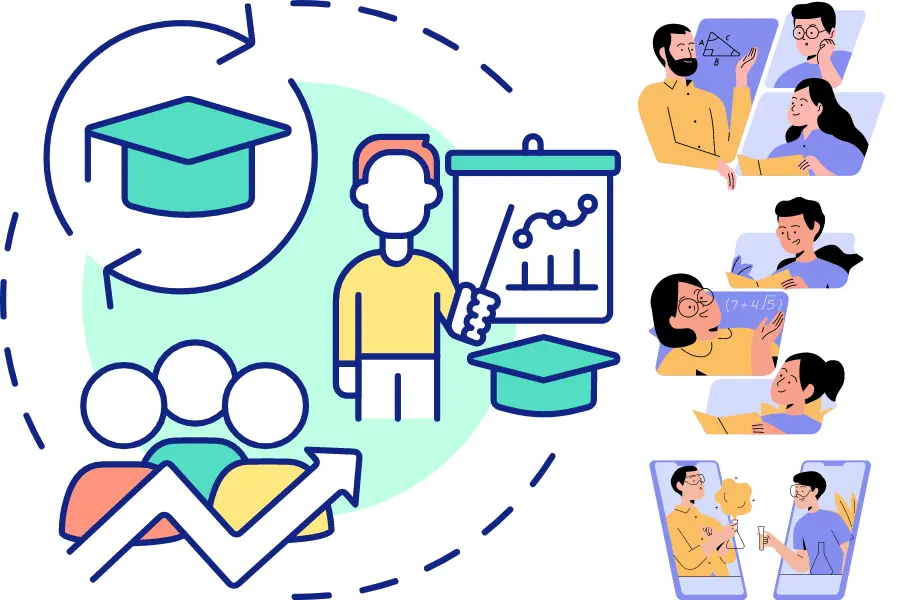Teaching and managing a remote team is a different kettle of fish than managing an in-house team. If you look at many international companies, they have their teams distributed globally and need to manage them remotely.
People also love to read: Is Walkme the best tool for employee training? Or shall we go for some Walkme Alternatives?
If your workforce is largely remote, and employee engagement among that group is low, then a remote training program may be the best option for you.
Applying software for employee monitoring and productivity, you may evaluate how well employees are learning. In this article, we will go through 6 tips for improving the remote learning experience of your team.
6 Tips for Improving the Remote Learning Experience of Your Team
Here are six tips to help you improve the remote learning experience for your team:
Provide many forms for learning
If all of your content is presented in text format, it’s difficult to hold learners’ attention. Offer live sessions, bite-sized microlearning chunks, and one-on-one coaching calls so that they can clear up any doubts they have about what you’re teaching them.
There are many different types of material you can use to train remote workers, including audio files, video clips, and presentations.
You may want to create a template for your training sessions if you plan on doing them regularly. PowerPoint templates make it easier to communicate ideas.
Give your students a variety of assessments and hands-on activities to measure their progress. Offering learning opportunities in multiple formats will keep them engaged and make retention easier.
Select the LMS based on your needs
A learning management system can help you customize your curriculum for different students and offer them a variety of alternative formats to learn.
This application allows your HR and L&D departments to identify skill shortages because it provides a wealth of information regarding employee performance.
With all of this information, you can determine the training requirements and provide a customized learning environment.
However, before choosing an LMS, examine the many varieties and determine which best suits your needs and budget.
Develop a community of learners
One way to improve engagement among remote workers is by creating a virtual community where they can interact with other employees.
Your students can use modern communication technologies like Trello, Asana, and Slack to communicate with each other.
This allows the workers to quickly respond to questions about their work. or you can take their screenshots of this answer.
Build an online community and use its many benefits to make learning fun, easy, and engaging.
Determine the efficiency
As with traditional classroom training, evaluate the efficacy of remote training. Finding your mistakes is difficult when you are tracking your development.
So, before it’s too late, learn about those warning signs. Employee performance can be measured by the completion rate of online courses, along with participation in live classrooms and communication channels.
Exams can also be held to assess worker understanding of specific topics. This method is useful for identifying a rogue employee.
Maintain a mobile-friendly interface
Your staff will struggle to get their work done and attend training sessions if they must use laptops while sitting at desks.
However, with mobile learning programs, your staff members can access course materials while they’re at home or on the go. Learning becomes more convenient and accessible.
Make use of gamification
Gamification can help students become more involved and eager to learn. It is a fantastic way of incorporating elements such as leaderboards, awards, points systems, badges, etc into your online courses. By competing with one another, students learn from and motivate each other.
They receive credit or move up the leaderboards when they complete an assignment. Because people want to compete and do better than their peers, gamification is a great tool for involving students and keeping them motivated.
Conclusion
With remote working a possible scenario for many of us, it is crucial to take every step possible to create a productive learning experience for yourself and for the individuals that you work with.
These 6 tips will get you started on your journey to create a positive, productive, and collaborative learning environment for your team, or any group within your organization.



![10 Best Bags for Nurses | Personal Recommendation [2023] 4 Best Bags For Nurses Reviews in 2021](https://knowworldnow.com/wp-content/uploads/2022/12/Best-Bags-For-Nurses-Reviews-in-2021.webp)



![F95Zone Games - The Ultimate Guide for 2021 [F95Z Guide] 8 F95Zone Games](https://knowworldnow.com/wp-content/uploads/2021/07/ArTtW5LrK3b-z-0-y-637f48d86203817a9042a857.webp)